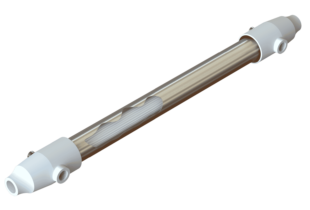Polishing Sample Gas with a PD Series Gas Dryer
The ability to accurately measure gas components and concentration is essential in many environmental and industrial process applications to optimize production and meet regulatory requirements. One of the most common sampling techniques in Continuous Emission Monitoring (CEMS) applications is cold/dry extractive sampling.
An analyzer is only as good as its sample!
The cold/dry extractive technique involves extracting the sample gas from the source, transporting the sample gas through a heated umbilical to a sample conditioning system, which includes a thermoelectric cooler, and then to an analyzer for analysis. The function of the sample conditioning system is to prepare the sample to be compatible with the analyzer. This includes removing any particulate, lowering the temperature of the gas, and removing the condensate.
Properly conditioning a sample gas is essential not only to ensure analytical accuracy but also to:
- Prevent equipment, component, or instrumentation damage or failure
- Reduce repair and replacement costs
- Maintain quality of the product yield
- Minimize fines and legal issues caused by violating environmental regulations

What does it mean to “polish” a sample gas?
The accepted industry standard for the outlet dew point of a thermoelectric cooler is 4°C. This temperature is typically well below the ambient temperature of an environmentally controlled analyzer shed and therefore expected to prevent condensation.
“Polishing” a sample gas refers to further drying the sample gas after the thermoelectric cooler to achieve an even lower dew point. This lower dew point helps to provide greater analytical accuracy and protects the sensors and analyzer from the potentially harmful effects of water.

Isn’t the gas already dry?
As mentioned, it is commonly thought that a 4°C dew point is a stable dew point that prevents condensation from forming. However, this is in an ideal condition.
- Unexpected cold spots, changes in pressure and flow restrictions after the sample gas exits the thermoelectric cooler and before it enters the analyzer can cause condensation
- Upset or abnormal conditions upstream can temporarily overwhelm a thermoelectric cooler resulting in a higher-than-expected outlet dew point
- Failure of the Thermoelectric Cooler may result in the sample gas only traveling through passive drying resulting in a much higher, even condensing outlet dew point
What are the benefits of a lower dew point?
Besides ensuring that the dew point remains below condensation levels, there are other benefits of reaching lower dew points:
- Avoiding spectral interference: The presence of water can cause spectral interference affecting analytical accuracy and sensitivity. For example, an NDIR detector measures the amount of infrared light absorbed by CO2 flowing through the sample chamber. CO2 and water absorb IR at the same characteristic wavelengths which may affect the analyzer’s sensitivity to CO2 and ultimately the analytical accuracy of the reading.
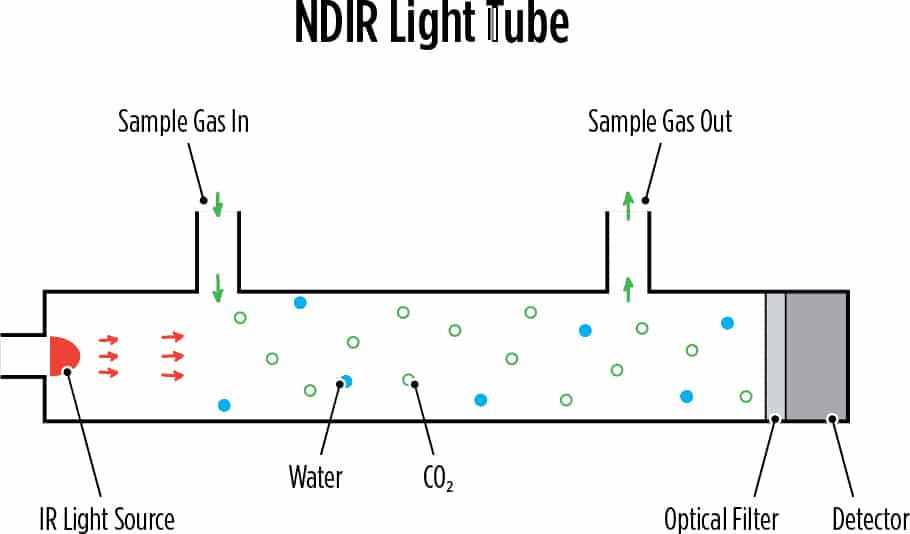
- Avoiding the formation of sulfuric acids or ammonia salts: Water in the sample line can cause the formation of sulfuric acid or ammonia salts leading to clogged sample lines or worse yet, damage/corrosion to the optical bench
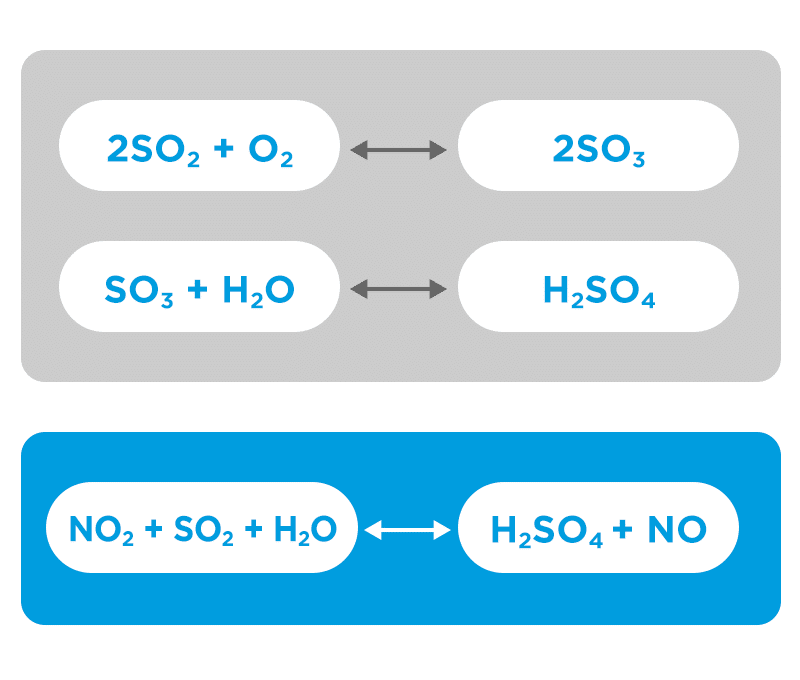
Benefits of a PD-Series Gas Dryer as a Polisher:
Installing a PD-Series Gas Dryer after the thermoelectric cooler is a simple and efficient way to lower the dew point of the sample gas.
During normal operating conditions, the PD-Series gas dryer lowers the dew point of the sample gas to almost -10°C. This greatly reduces the risk of condensation and essentially eliminates the possibility of spectral interference or the formation of sulfuric acids and ammonia salts.
When experiencing upset conditions causing the thermoelectric cooler to become overwhelmed, the PD-Series Gas Dryer can reduce dew points to well below 0°C, preserving analytical accuracy and protecting complex equipment, components, and instrumentation from the effects of condensation.
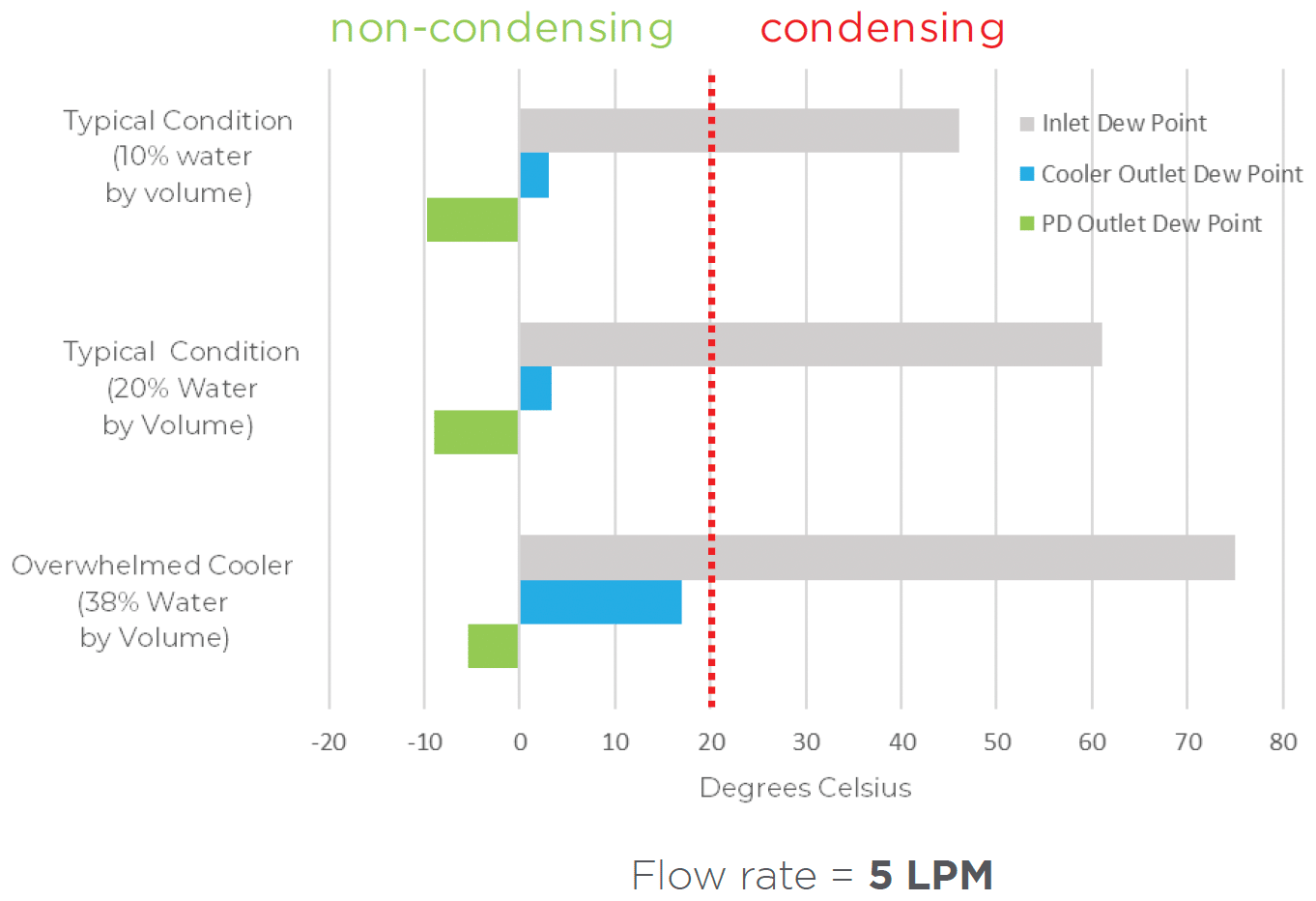
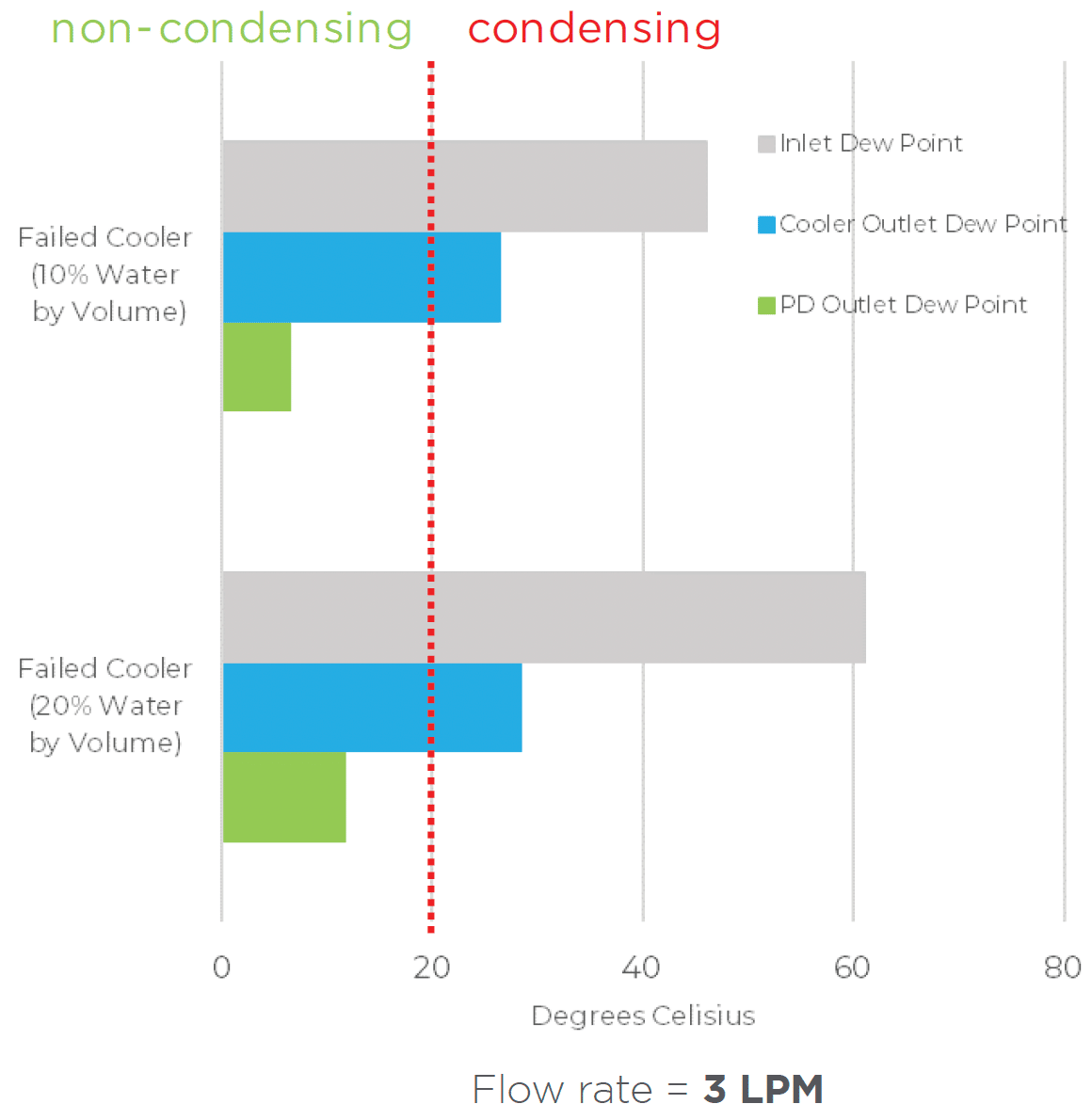
In the worst-case scenario, where the thermoelectric cooler completely fails, the PD-Series Gas Dryer maintains an outlet dew point well below ambient levels helping to prevent condensation from forming and avoiding a complete shutdown of the sample line until repairs can be made.
Two of the most prominent integrators worldwide, one in the United States and one in South Korea, include a PD-Series Gas Dryer with every sample conditioning system. What was once considered best practice has become standard practice. Customers now spec in the gas dryer when ordering a sample conditioning system.
Testing was performed under laboratory conditions. Incoming sample gas was compressed air humidified using a controlled humidity generator. Heated line was set to a consistent 150°C. Ambient temperature was 20°C.
Equipment used: Baldwin M425D Thermoelectric cooler rated for 3 – 5 LPM and incoming sample dew points up to 65°C. PD-Series Gas Dryer Model#: PD-50T-24-MSS

